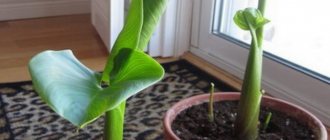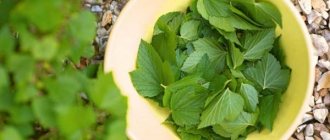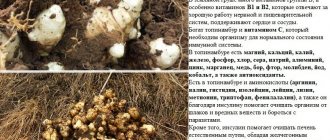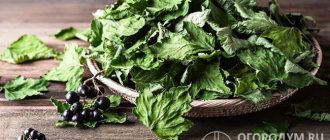Spicy and aromatic herbs add sophisticated flavors to many familiar dishes. However, it is not always possible to decorate food with fresh and juicy herbs. Basil has a rich taste and bright aroma, which is not lost even when harvested for the winter. This plant is widely used in Mediterranean and Oriental cuisine, and also transforms the usual diet. Therefore, it’s worth figuring out how to properly prepare and use the seasoning to fill your favorite dishes with unique flavors.
What varieties of basil are suitable for drying?
For drying, you can use absolutely any variety, depending on tastes and personal preferences. After all, each variety has its own shades: lemon, pepper, clove, anise and even vanilla. You can even experiment and prepare different types. Basil, with the aroma of cloves and lemon, is a great addition to meat dishes. Anise-flavored seasoning goes well with fish and vegetables.
Among the variety of varieties when drying, preference is still given to purple plants. It is the dark leaves that contain an increased concentration of aromatic oils, which retain the characteristic pungent odor of the seasoning.
Among the purple varieties, there are 3 brightest varieties:
- Yerevan is the most popular purple variety of basil, which is distinguished by the tart flavor of tea and allspice. Perfectly complements soups, salads, meat and fish dishes, as well as sauces. In one season you can get up to three harvests from a bush.
- Dark Opal is a purple-red American variety popular for its peppery and rich clove-spicy aroma. The dried leaves are often added to spice mixtures, flavored oils, and balsamic vinegars.
- Tulsi is an Indian sacred basil that has a sharp clove aroma and a peppery, bitter taste. It best reveals the taste of game, so it is used for preparing marinades.
Video:
top 3 varieties of basil for windowsills and garden beds Expand
How to prepare greens for drying
Depending on the variety, basil can be grown in open ground, in a greenhouse, or even on a windowsill. Therefore, anyone can stock up on spicy seasoning for the winter, even without a garden plot.
It is best to harvest basil at the very beginning of the plant's flowering. In this case, you can cut both leaves and flowers. In order for the bush to produce a second harvest, it is important to maintain the height of the stems about 15 cm, with 4 pairs of leaves.
The harvest is cut mainly in the first half of the day, when the sun has already dried the leaves a little. To get the richest and most aromatic seasoning, it is recommended to harvest throughout the warm period. After all, it is in the delicate thin leaves that the greatest concentration of trace elements and aromatic oils is found.
Double harvesting is more suitable for basil growing in open ground. The first harvest is carried out from the second half of July to August, when the plant has reached its maximum growth. The leaves are cut off along with the shoots so that in the future the bush will branch out and produce a second, richer harvest. The first collection is most often used fresh, adding to seasonal salads from fresh vegetables. You can also dry the required amount of greens. After cutting the leaves and flowers, water the plant generously to provide sufficient water for recovery and growth.
The secondary collection is carried out at the end of September, when lush greenery has already grown, but the flowers have not yet bloomed. It is important to cut the leaves before flowering, otherwise the taste of the leaves will be bitter. Repeat crops are most often used for freezing and drying.
Devices and devices
It doesn't make much difference whether you dry basil indoors, in a ventilated place, or outside. The main thing is that the workpiece should not be exposed to moisture or direct sunlight, and that there should be no strong-smelling substances or products nearby.
The leaves are scattered evenly over a surface covered with parchment or soft cloth.
Newspapers and colorful pages of magazines are absolutely not suitable in this case. When the leaves dry out, they can stick to the smooth paper surface, absorb the smell of printing ink and, which is completely undesirable, even come into contact with it.
As a substrate, use parchment (as in the photo), paper or kitchen towels made of fabric that absorbs moisture well.
The top of the workpiece must be covered with gauze. Several times a day, the greens are moved with a spatula, moving from place to place.
It’s great if you have a device in the form of a multi-tiered structure made of nylon mesh. A lightweight hanging dryer can be mounted in any convenient place: on a tree branch, under the roof, in the attic, veranda, loggia, balcony, in the room. It completely protects the raw materials from the smallest contaminants and the penetration of insects, without at all impeding the circulation of air inside, but will not allow the contents to spill out if there is a strong wind. Even if it falls and turns over, the raw materials inside will remain clean and undamaged.
You can build such a section yourself from the remains of a window mosquito net or gauze, stretching the material onto a cardboard frame with sides using a stationery stapler.
A mesh hanging dryer is an excellent option for outdoor placement (a similar one can be found on AliExpress)
The delicate leaves dry very quickly, which allows you to harvest large quantities of greens in a short time. Using household appliances - a dehydrator, an oven, an electric or gas stove, and even more so a microwave - to dry any herbs is highly undesirable . Heat treatment will kill everything beneficial that is in the basil. Saving time will come at a cost.
If you need to speed up the process, it is more advisable to use a device with a more gentle effect - an infrared radiation mat .
When preparing greens in an electric dryer, it is recommended to choose the most gentle mode
How to properly dry basil
When simply dried, basil, like other plants, loses up to 80% of its moisture. Aromatic oils evaporate along with it, so dried leaves can take on the smell of hay. To avoid such results, it is important to follow all stages of preparation.
There are several ways to dry plants that can be done without special equipment at home. Moreover, they allow you to maintain the maximum possible concentration of healthy, tasty and aromatic components of the seasoning.
In the oven
- Before drying, it is important to properly prepare the raw materials. Wash the greens with cool, clean water and dry on paper towels. The porous structure of disposable towels will well absorb excess moisture flowing from the leaves. If there is a large amount of water, replace wet towels with new dry ones, repeating the procedure if necessary.
- We leave the spread out leaves for 1–2 hours, after which we proceed to the drying itself.
- Preheat the oven to a stable temperature of 90–100 degrees.
- Line baking sheets with parchment paper and place dried basil leaves on top, loosely to each other.
- Place 1-2 baking sheets into the preheated oven, leaving the oven door ajar. Dry the leaves in this way for 1.5–2 hours. At this time, the room is filled with the fragrant aroma of spices.
During drying, the mass of the leaves noticeably decreases, while the rich taste and aroma are preserved.
In an electric dryer
When it is necessary to prepare a lot of seasonings and dry some fruits and berries, an electric dryer comes to the aid of the housewife. Using a special device, you can make blanks while preserving a maximum of useful components.
- Wash the basil leaves in clean cool water and shake in a large sieve to remove excess water. For this method it is better to use only leaves.
- We place the raw materials on pallets in a thin layer, not tightly, and place them on a heating base.
- In order for the seasoning to retain the greatest amount of useful components, set the temperature to 35 degrees and keep one tray for no more than 1 hour. At this temperature level, the leaves will not have time to dry completely in 1 hour, so you need to heat the trays alternately until fully cooked.
Depending on the type of electric dryer, the temperature and drying time may vary. To prepare seasonings with high quality, you should always pay attention to the recommendations of the manufacturer of a particular device.
In the microwave
Before drying in the microwave, rinse the leaves in clean cold water, lay them out on clean towels and let them dry naturally for 2 hours. Then we spread the leaves on a plate in a thin layer and put them in the microwave.
Drying in the microwave takes a few minutes at medium power. During this time, excess moisture has time to evaporate, but the leaves do not dry out and retain their properties and aroma. Leave the dried leaves to cool for an hour.
We usually grind the finished seasoning and pour it into a jar with a tight-fitting lid.
In the sun
You can dry basil for the winter in a simple natural way, without the use of special electrical appliances.
- We wash the leaves with cold clean water and lay them out on disposable paper towels. At the same time, we change the towels as they get wet so that mold does not form during the drying process.
- When the excess moisture has been absorbed by the towels and evaporated naturally, we move on to the drying process.
- Place the raw materials on baking sheets covered with waffle towels. Cover the top with thin gauze in 1-2 layers so that as they dry, dust does not accumulate on the leaves and they are not blown away by the wind.
When drying basil in the sun, it is important to choose the right place - a warm, dry, ventilated, covered space. This could be a place under a canopy, a veranda or a balcony.
The leaves are dried in this way for several days.
Outdoors
The method of hanging and drying in a “bundle” is familiar to every avid gardener. With such a simple and accessible method, no special equipment or special preparation is required.
This method is suitable for double harvesting, when it is possible to cut entire branches. When collecting leaves regularly, it is better to use other drying methods.
- We wash the cut branches, shake off excess moisture and leave on a towel for a couple of hours to evaporate excess water. Then we form the branches into small bundles and tie them with an elastic band, ribbon or even thick thread.
- For drying, choose a well-ventilated but closed place, since the bunches will not be protected from rain and dust. A place under a roof in a country house or a closed veranda is best suited.
- We hang the bundles upside down so that they do not touch each other. Leave the workpiece for 1–2 weeks until completely dry.
Dried basil can be chopped and stored in an airtight glass container.
In a refrigerator
Basil leaves can also be dried in the refrigerator to preserve the color and flavor. Place the washed and dried raw materials on refrigerator shelves covered with waffle or paper towels. At the same time, there should be no food in the refrigerator during the drying period that will spoil the aroma of the spice. With this method, the leaves lose moisture within 1–1.5 weeks and dry out completely.
Video:
how to dry any greens in 1-5 minutes Expand
Preparation of raw materials
The collected raw materials are carefully sorted, removing specimens with suspicious defects and traces of insects. Sorted by variety and color of leaves, rinsed to remove dust and dirt particles. To get rid of excess moisture, you do not need to blot the raw materials with a cloth or napkins, just lightly shake the bunch of drops of water several times.
You can dry basil for seasonings with whole sprigs, freely laying them out on a flat surface and covering them from direct sunlight to preserve their natural color.
It is convenient to place the branches in a suspended state, tying 5-6 pieces into bouquets and attaching them to a rope at the base
The beams are placed at a sufficient distance from each other so that they do not touch the walls and surrounding objects.
How to properly store dried basil
Whole leaves can be stored in cotton or linen bags in a cool, dark place.
To obtain a fine seasoning, only the most fragile parts of the plant - flowers and young leaves - are crushed. The spice powder is stored in airtight glass containers in a dark and cool place to preserve the flavor and aroma. Crushed basil is difficult to distinguish from other herbs such as tarragon, sage or rosemary, so you should always stick or tie labels with the name.
The tougher parts of the basil - the stems and twigs - can be left and used to make tea, infusion or alcohol tincture. It is better to store the stems in a glass jar or canvas bag.
Rules for storing spices
It is believed that basil should not be stored for more than a year, even if all the rules are followed, since essential oils still evaporate over time.
In dried form, this spice is folded:
- in tightly sealed jars;
- cloth bags;
- packages of thick paper, folding them at the top and holding them with a paper clip.
The spice is similar in appearance to some other types. Therefore, it is worth signing the container so as not to confuse it later. You should not store basil next to other foods unless it is placed in a tightly sealed container.
It’s not that difficult to prepare a healthy spice yourself, and it won’t take up much space. Do you dry your own basil or do you prefer to buy it in the store? Which of the described methods do you consider preferable?
What are the benefits of dried basil?
Dried basil, prepared according to all the rules, carries the same beneficial composition as the fresh plant. Regardless of color, the prepared seasoning retains the same composition:
- vitamins: A, C, E, K and others;
- trace elements: manganese, iron, zinc, copper and selenium;
- tannins;
- phytoncides;
- essential oils;
- saponins and glycosides;
- Sahara.
Not all aromatic seasonings can boast such a rich beneficial composition. Therefore, women who deliberately limit their diet are recommended to use dried basil as a healthy mineral supplement to dietary dishes. Fresh or dried basil not only supplements the diet with substances necessary for the body, but also removes harmful toxins.
Infusions and decoctions on their own, as well as as part of preparations, are used for medicinal purposes. The plant has antiseptic and anti-inflammatory properties. Properly prepared infusions, decoctions and tinctures are used to relieve toothache, improve the functioning of the gastrointestinal tract, and relieve inflammation of the mucous membranes.
Interesting Facts
- Dried crushed basil leaves are used not only when preparing hot meat dishes, sauces or pickles, but also in the production of alcoholic beverages.
- This herb destroys up to 90% of harmful bacteria in the mouth, including those that cause dental problems.
- In India, basil is the second sacred plant (the first is the lotus).
- Basil has repellent properties, which is why it was used in the mummification process in ancient Egypt.
- Translated, the name of the spice means “royal”.
- In salads and ready-made dishes, the grass must be torn, otherwise oxidation processes will begin in it and the leaves will quickly turn black.
Where is dried basil used?
The most common use for dried basil is, of course, cooking. It’s hard to even imagine how many hundreds or even thousands of different dishes can be prepared with this seasoning.
Dried basil is used to add a special flavor to salads, soups, side dishes, meat and fish dishes. The seasoning is added to various sauces and dressings. They even brew spicy tea.
The bright seasoning also goes well with other herbs: garlic, sage, rosemary, tarragon. These rich spice blends work best when paired with game.
Basil is very popular in medicine and cosmetology. Many skin care products containing basil have antioxidant properties that improve the condition of aging skin. In folk medicine you can find infusions that help prevent the appearance of new wrinkles. More concentrated preparations with spice are used to get rid of warts and other blemishes on the skin.
Basil in any form should be present in the diet of women suffering from regular menstrual pain. The high iron content in the leaves of the plant helps replenish the balance of microelements during active blood loss.
Basil-based decoctions reduce pain from cystitis. Even a weak decoction, when taken regularly, relieves inflammation and helps stop pain.
Basil is also important for men's health. The beneficial composition has a positive effect on potency and sexual desire. To obtain this effect, it is important to include the seasoning in your regular diet.
The components that make up basil help protect gums from inflammation and strengthen tooth enamel.
Aromatic tea with the addition of herbs normalizes the functioning of the nervous system during times of frequent stress and anxiety. The relaxing and calming effect of spicy tea helps you cope with life's difficulties more easily.
A light decoction of basil, when taken as a course, cleanses the body of waste, toxins and eliminates problems of the gastrointestinal tract.
Lotions prepared on the basis of spicy herbs promote the healing of wounds and abrasions.
When using basil for medicinal purposes, it is also important to remember the dosage and contraindications. Before using such products, be sure to consult your doctor.
According to popular belief, dried basil has special magical properties: it attracts good luck, prosperity and love. Since ancient times, it was believed that this plant maintains a peaceful environment in the house and protects all family members from ill-wishers.
Recipes with dried basil
The taste and aromatic properties of basil are very characteristic and bright, so most dishes are only supplemented with a small amount of seasoning. However, there are a number of delicious dishes in which basil is an integral ingredient.
Tomato soup
All traditional Italian recipes are complete without the classic combination of basil and tomatoes. A light and savory soup based on a Mediterranean recipe will diversify your usual diet.
To prepare you will need:
- red onion – 1 pc.;
- garlic – 3 cloves;
- tomatoes in their own juice – 800 g;
- basil – 2 fresh bunches or 2 tbsp. dried seasoning;
- broth or water – 0.5 l;
- olive oil – 2 tbsp;
- cream 20% – 200 ml;
- feta cheese – 70 g;
- mixture of Italian herbs – 2 tsp;
- salt and pepper - to taste.
Step by step recipe:
- Fry finely chopped onion in a frying pan with olive oil for 3 minutes. Add grated garlic, stir and fry for another 3 minutes.
- Peel the tomatoes and turn them into a paste using a blender.
- Combine tomato pulp and fry, add broth. Mix everything and bring to a boil. Cook the mixture over medium heat for 10 minutes.
- Add cream and basil. If the basil is fresh, chop it in advance. Add Italian seasoning to the soup and add salt and pepper. Mix thoroughly and cook over low heat for 10 minutes.
The dish is ready. Before serving, add diced cheese and croutons to the bowl of soup.
Caprese
This is a popular Mediterranean snack, which is a light and harmonious combination of ingredients. The finished dish will decorate the holiday table and will be an excellent addition to red wine.
For preparation you will need:
- tomatoes – 3 pcs.;
- mozzarella – 200 g;
- basil – 2 tsp;
- balsamic vinegar - 1 tbsp;
- olive oil – 2 tbsp;
- salt and pepper - to taste.
Step-by-step preparation:
- Cut the tomatoes into medium-thick slices and place them beautifully on a plate.
- Cut the cheese into slices of the same thickness and place on the tomatoes.
- Sprinkle basil and other seasonings on top, pour over oil and vinegar.
The dish is ready. Also, if desired, the appetizer can be decorated with flax and sesame seeds.
Basil hummus
Among the basil-based recipes, it is impossible to miss a nutritious vegan dish: hummus. The bright and sharp taste of basil harmoniously sets off the delicate chickpea cream. And sweet tomato paste and fiery Tabasco add piquancy to the dish.
To prepare you will need:
- chickpeas – 100 g;
- dried basil – 2 tbsp;
- pine nuts – 2 tbsp;
- olive oil – 2 tbsp;
- lemon juice – 1 tsp;
- salt – 1 tsp;
- ready-made Tabasco sauce – 3 drops;
- tomato paste – 1 tbsp.
Step by step recipe:
- Soak the chickpeas for 12 hours. Drain the water and add fresh water so that it is just above the peas. Boil over medium heat until done.
- Grind the boiled chickpeas, basil and pine nuts using a blender.
- Add olive oil and lemon juice, beat with a blender.
- Pour tomato paste into the mixture, add spices and Tabasco sauce. Mix thoroughly. Hummus is ready.
Bruschetta with basil, tomatoes and garlic
This is a traditional Italian appetizer with an amazing combination of flavors.
To prepare you will need:
- baguette – 1 pc.;
- olive oil – 2 tbsp;
- balsamic vinegar – 0.5 tsp;
- feta or fetax cheese – 50 g;
- cherry tomatoes – 5 pcs.;
- basil – 1 bunch fresh or 1 tsp. dried herbs.
Step by step recipe:
- Cut the baguette into thin slices, brush with olive oil and lightly fry.
- Similarly, cut the cheese and place it on top of the baguette slices.
- Cut the tomatoes into cubes, mix with seasonings and balsamic vinegar and fry in a frying pan greased with olive oil.
- Place the roast on top of the cheese.
The dish is ready. When serving, bruschetta can be decorated with fresh basil leaves.
Green basil pesto
This is a light, summery, basil-based, spicy sauce that complements pasta perfectly.
To prepare you need to take:
- fresh basil - 2 bunches (or 2 tbsp dried seasoning);
- garlic – 3 cloves;
- parmesan – 50 g;
- pine nuts – 30 g;
- olive oil – 3 tbsp;
- lemon juice – 1 tsp;
- salt and pepper - to taste.
Step by step recipe:
- Pour the nuts into a heated dry frying pan and fry for 2 minutes, stirring constantly.
- Grind the cheese and garlic on a grater.
- Combine lemon juice, olive oil and basil.
- Combine all ingredients and grind in a blender.
- Add salt, pepper, and mix.
The pesto sauce is ready. The finished dish should be stored in the refrigerator for no more than 5 days.
Harvesting
The basil harvest should take place in mid-July or in the first half of August. It is worth doing in dry weather, when there is no dampness. To effectively preserve nutrients, it is recommended to cut when the flowers have not yet appeared, but the bush already has flower stalks. It is during this period of development that the maximum amount of essential oils is formed in the leaves. The leaves collected at this time will be the most fragrant. In this case, the shoots should not be plucked, but cut off with a sharp knife into 4 pairs of leaves. With this type of harvesting, the bush will quickly send out new shoots and produce a new harvest.
Collecting seeds
In order not to be late with the deadlines, it is recommended to regularly inspect the basil bushes - the inflorescences will signal that they are ready for harvest. No preliminary preparation is required - for the process you will only need garden shears and mittens (for those with delicate skin).
Step-by-step process for collecting seeds:
- Carefully examine the plant, identify large seeds.
- Use sharp scissors to cut off the inflorescence, be sure to grab part of the peduncle.
- Carefully fold the inflorescences - they will be tied into tight bunches.
How to collect seeds without loss?
Often, to separate planting material from the seeds, they do it simply - rub the dried inflorescences with their hands. It is not recommended to do this - there is a risk of damaging the skin and causing irritation. It is better to use thick linen bags, which will allow you to easily obtain seeds.
Place the dried testes in a bag and tie tightly. Perform threshing - gently tap the surface with a stick or hand for 5-10 minutes.
Pour the contents of the bag into a sieve with large mesh. It is better to blow outside in windy weather. First remove particles of testes by hand
Winnow carefully - the seeds are quite small
Using a sieve to separate the planting material from the seeds is another option for obtaining seeds. Be sure to make sure that the inflorescences are ripe and dry - this will make the work easier. Stock up on a pestle in advance for grinding plant materials - it is not recommended to carry out the process with your hands, so as not to injure the skin.
Use a pestle to gently crush the inflorescences in a sieve. Every 1-2 minutes remove debris and particles of testes
Complete the process with winnowing, which will clean the planting material.
After threshing, it is recommended to re-dry the planting material in a room with low humidity and high temperature. Use baking sheets or thick sheets of cardboard. 2-3 days are enough for drying. Be sure to stir the seeds; if damaged grains are found, remove them immediately.











